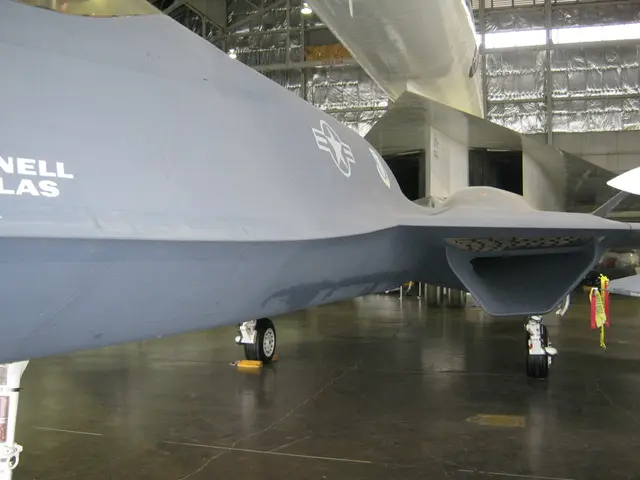Recognizing the Distinctions in Terminology: Airport, Aerodrome, Airfield, and Airbase Explained
An Uncomplicated Guide to Aviation Facilities: The Lowdown on Airports, Aerodromes, Airfields, and Airbases
Navigate the intricate world of aviation like a pro by understanding the disparities between airports, aerodromes, airfields, and airbases. These terms may seem interchangeable, but they each serve a unique role in the aviation industry.
What's an Aerodrome?
An aerodrome is a catch-all term for any zone where aircraft take flight or land. You'll find aerodromes at various scales, from humble airstrips to expansive airports. Aerodromes cater to a wide range of flight operations, from civilian to military pursuits.
🔍 Highlights:- May feature basic infrastructure such as runways, taxiways, and fueling stations.- Can be unpaved or a simple area ready for aircraft operations.- Might lack extensive passenger services or air traffic control facilities.
🗺️ Example: The Casement Aerodrome (EIME) in Ireland, serving as the Irish Air Corps' headquarters, fits this description. Although primarily military, it occasionally supports civil aviation activities as well.
What's an Airport?
An airport is a specialized type of aerodrome that meets civil aviation authority requirements, like the International Civil Aviation Organization (ICAO). They are tailored for commercial air travel, offering an array of facilities designed to manage high volumes of passengers and cargo.
🔍 Highlights:- Equipped with control towers, terminals, runways, and taxiways.- Includes essential passenger amenities like lounges, shops, and security checkpoints.- Typically caters to both domestic and international flights, necessitating customs and immigration services for international travel.
🗺️ Example: Los Angeles International Airport (LAX) in California is a bustling airport, renowned for handling a colossal number of passengers yearly.
What's an Airfield?
An airfield refers to a smaller facility than an airport, focusing on general aviation rather than commercial air travel. These facilities typically boast limited infrastructure and often lack air traffic control towers or expansive terminals.
🔍 Highlights:- Often consists of a single runway with basic support facilities like small hangars.- Catering to private aviation, flight training, or recreational flying.- May lack passenger amenities and commercial airline services.
🗺️ Example: The Duxford Airfield in the UK, with its World War II history, is a hub for aviation enthusiasts and private aircraft.
What's an Airbase?
An airbase is a military facility tailored to handle military aircraft. Unlike civilian airports, these facilities are equipped to address specific military demands, encompassing maintenance, training exercises, and defense operations.
🔍 Highlights:- Enforces tight security measures due to restricted access.- Designed to manage military equipment, aircraft maintenance, and logistics.- Often strategically located for defense or rapid response.
🗺️ Example: Located in California, Edwards Air Force Base (AFB) is a significant testing site for the U.S. Air Force, famous for its advanced research and flight testing endeavors.
The Bottom Line
Understanding the nuances between aerodromes, airports, airfields, and airbases is crucial for anyone immersed in the aviation universe. While all airports qualify as aerodromes due to their function, not all aerodromes meet the standards to be considered airports. Airfields accommodate smaller-scale aviation needs, typically without the passenger services provided by airports. Airbases, on the other hand, are dedicated exclusively to military aviation purposes, emphasizing security and strategic operations. This knowledge provides a clear picture of the diverse range of facilities championing the aviation industry's growth.
Additional Insights and Further Reading
- Differ Btw, This vs. That
- Difference Between
- Comparisons Wiki
These resources delve deeper into the specificities of different aviation facilities. For more precise information, consult the ICAO's official documentation.
Aviation enthusiasts may be interested in learning about the various roles these facilities play in the aviation industry. For instance, aircraft maintenance, finance, and the aerospace industry might find valuable insights in understanding the differences between an airfield and an airport, as airfields focus on general aviation and typically offer less infrastructure compared to airports that cater to heavy commercial air traffic. Moreover, airbases, which are military facilities designed for handling military aircraft, might provide intriguing information about the operations and equipment used for defense purposes.







